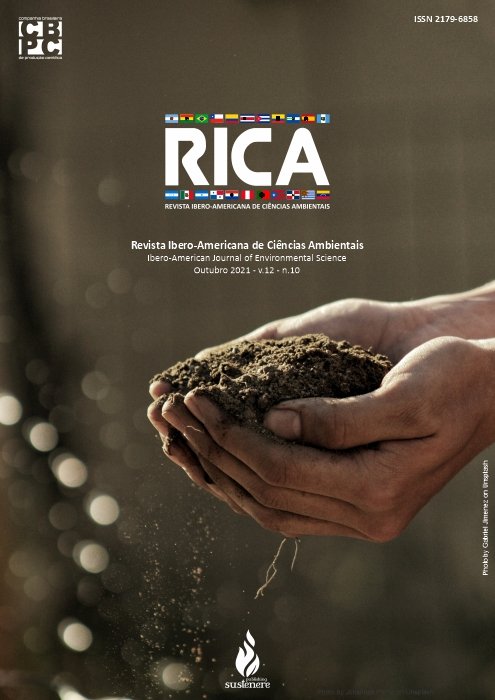Estimates of global radiation based on insolation in the Brazilian Amazon
DOI:
https://doi.org/10.6008/CBPC2179-6858.2021.010.0020Keywords:
Solar radiation, Sunshine ratio, Angstrom-Prescott (AP) model, Atmospheric transmissivity, Statistical indicatorsAbstract
The objective of this paper was to calibrate and evaluate statistically the simplified Angström-Prescott (AP) model for estimating global radiation (Qg) based on the sunshine ratio (n/N), in different data groups, in the Brazilian Amazon. The AP model is based on the relationship between atmospheric transmissivity and sunshine ratio (Qg/Qo = a + b (n/N)), and has two coefficients (linear and angular) that require regional calibrations. For this purpose, we used data from 20 meteorological stations (automatic and conventional) belonging to the network of stations of the National Institute of Meteorology (INMET) inserted in the Amazon biome; the databases were separated into total, annual (total data by station) and seasonal groupings (dry, dry-rain, rain and rain-dry), considering the proportion of 70 and 30% of database for calibration and statistical performance evaluation, respectively. The statistical indicatives mean beans error (MBE), square of the root of the mean error (RMSE) and the Willmott concordance index (d) were considered. The coefficients calibrated in the total database (which considers all stations in the biome) generated the worst statistical performances in Qg estimation (with differences of up to 36% between measured and estimated Qg values), indicating the need for evaluation by season and not by biome . For each season, the coefficients obtained in the annual grouping (total station data) presented statistical performances similar to the coefficients obtained in the seasonal groupings, regardless of the season and time of year, being therefore recommended for the simplicity and ease of application in the estimates of Qg.
Downloads
Downloads
Published
Issue
Section
License
Copyright (c) 2021 Ibero-American Journal of Environmental Sciences

This work is licensed under a Creative Commons Attribution-NonCommercial-NoDerivatives 4.0 International License.
The CBPC - Companhia Brasileira de Produção Científica (Brazil CNPJ: 11.221.422/0001-03) the material rights of the published works. The rights relate to the publication of the work anywhere in the world, including rights to renewals, expansions and dissemination of the contribution, as well as other subsidiary rights. All electronically published works may subsequently be published in printed collections under the coordination of this company and / or its partners. The authors preserve the copyright, but are not allowed to publish the contribution in another medium, printed or digital, in Portuguese or in translation.









